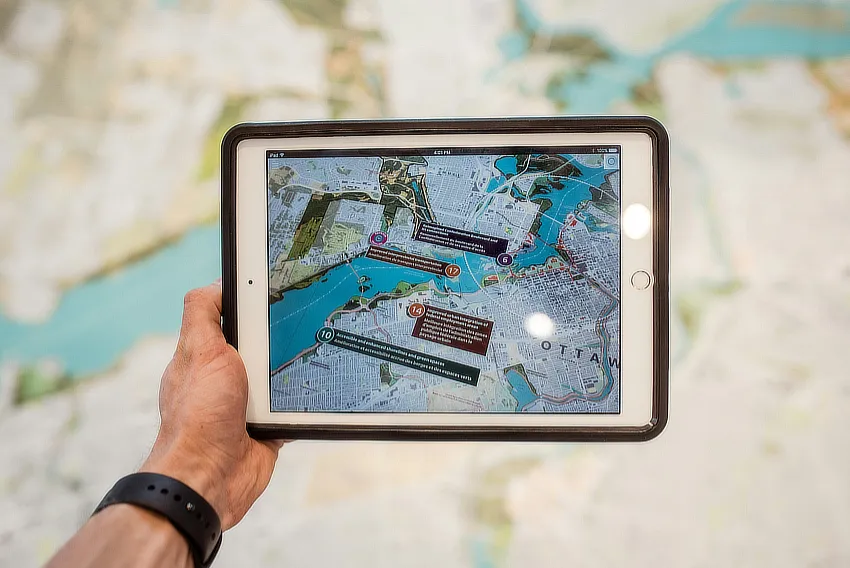In the evolving digital marketing landscape, augmented reality (AR) has emerged as a powerful marketing tool that is able to significantly impact customer engagement. Through integration of AR technologies into marketing campaigns, companies can involve their customers in an experience that transforms consumers' interaction with products. For instance, virtual try-on technology allows customers to visualize how the product would look in real-time, bridging the gap between the physical and digital environments. This kind of augmented reality experience not only intrigues consumers but also builds a deeper emotional connection between the consumer and the brand, enriching the customer experience.
As marketers explore the potential of applying AR to marketing, they are discovering various uses of augmented reality that can be efficiently used for AR advertising. From interactive product trials to immersive tale-keeping, augmented reality marketing offers innovative and novel marketing techniques that can outdo traditional advertising. With an AR app on a cell phone, customers can engage with a brand that is both personalized and unique, effectively taking their brand experience to a higher level. This augmented reality on mobile is a new era where augmented and virtual reality not just grab consumer's attention but also influence conversion and loyalty.

What is augmented reality marketing?
Augmented Reality (AR) marketing, often referred to as AR marketing, leverages augmented reality technology to create an immersive experience for consumers. By using AR, brands can enhance customer satisfaction through interactive experiences that blend digital content with the real-world. Mobile devices like smartphones allow users to engage with AR in marketing effortlessly, making it an essential tool in today's marketing strategies. For instance, AR in retail enables customers to visualize products in their environment, leading to a more memorable experience that enhances brand engagement.
Effective AR campaigns often utilize social media platforms to reach their target audience, showcasing examples of augmented reality that resonate with consumers. The transformative power of augmented reality is evident in how it connects brands with customers, making marketing efforts more impactful. Moreover, integrating VR can further enrich the AR experience, creating a comprehensive customer's experience that leaves a lasting impression. Through continuous marketing research, businesses can refine their marketing with augmented reality efforts to maximize effectiveness and engagement.
How to use AR technology in marketing
Use of augmented reality technology in marketing can significantly enhance customer experience through creating immersive experiences that engage with users. Brands can leverage augmented reality to make their products and services interactive with the help of smartphones and tablets. For instance, customers are able to visualize virtual objects in their surroundings with the help of mobile augmented reality applications, bringing together essentially physical and digital shopping experiences.
This new technique is one of a larger shift toward augmented reality in advertising, where AR and VR technology combine to create virtual scenes that interact with consumers. Augmented reality advertising campaigns can be spread through social media marketing, which increases brand visibility and interaction. As businesses continue to pursue the applications of AR in marketing, they will have to focus on developing new technology that meets the demands of consumers and enhances AR marketing experiences. New research agendas must examine novel ways of integrating these immersive technologies into existing marketing processes.
Augmented Reality and Marketing using Social Media Marketing
Augmented reality (AR) is changing the marketing arena, particularly through the use of social media marketing. Thanks to the introduction of smartphones and tablets, brands have been in a position to use augmented reality to enhance the customer experience through experiential offerings. Through the adoption of AR marketing experiences in their marketing campaigns, companies are able to present their products and services in an imaginary environment. This technology allows users to interact with virtual objects that become inseparable with their real-world environments, hence improving the experience to be more informative and engaging.
As companies explore the applications of AR in advertising, they are discovering new ways to involve consumers. AR promotional campaigns are capable of inviting the customer into a virtual space, where he can view how a product or service will find its place in his life. The combination of AR and VR introduces sophisticated technology that is transforming marketing strategy. In the future, a research agenda could continue to explore how such immersive technologies can be used to maximum effect in terms of engagement and sales.
The Future of Augmented Reality in Marketing
The future of augmented reality marketing has the ability to change the world of marketing in a large way. As smartphones are used far and wide, companies can implement augmented reality marketing campaigns that transform virtual worlds and bring them easily to consumers' everyday lives. Through AR marketing, companies create user experiences that endorse and enhance the customer experience, leading to increased brand awareness and increased brand loyalty.
As companies adopt cutting-edge technology to develop immersive augmented reality environments, they can boost customer satisfaction and engagement. These applications in marketing not only provide a unique way to showcase products but also position brands to stand out from traditional marketing methods. Future research agendas in AR research will focus on the value of AR in marketing and sales, exploring its potential to reshape current marketing practices and enhance the future of immersive experiences for consumers.
Studio Liddell can help you build AR apps that will push your marketing
Studio Liddell can help create AR apps that will elevate your marketing to the next level. Leveraging the potential of smartphone technology, we build interactive virtual environments that optimize customer experience. The use of AR technology is revolutionizing the marketing landscape by allowing brands to interact consumers in ways previously unimaginable. Our experts specialize in executing AR marketing strategies that build virtual elements in the real world and enhance the relationship between consumers and brands.
Through extensive academic research and multi-method research approaches, we gain a profound understanding of how AR can transform marketing applications. By creating captivating virtual experiences, brands can showcase their experience products effectively, turning an ordinary interaction into an engaging online experiment. With Studio Liddell, you can harness AR to provide innovative solutions that not only attract attention but also enhance customer loyalty.
Looking for augmented reality studio for your next AR app!
Call now +44 (0) 7798 834 159

